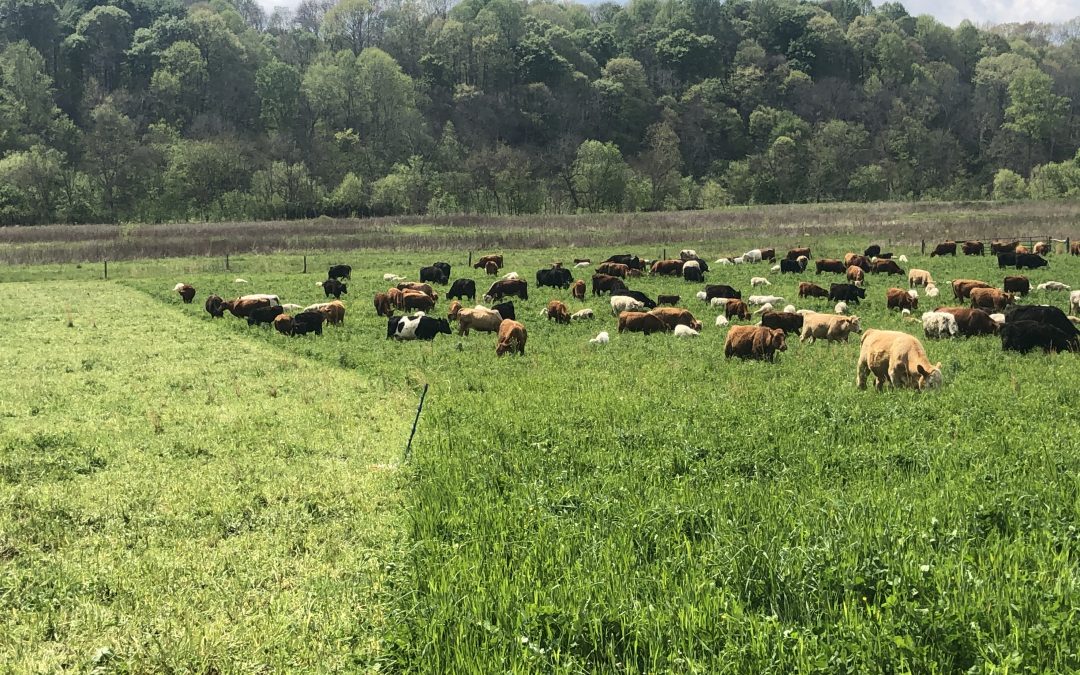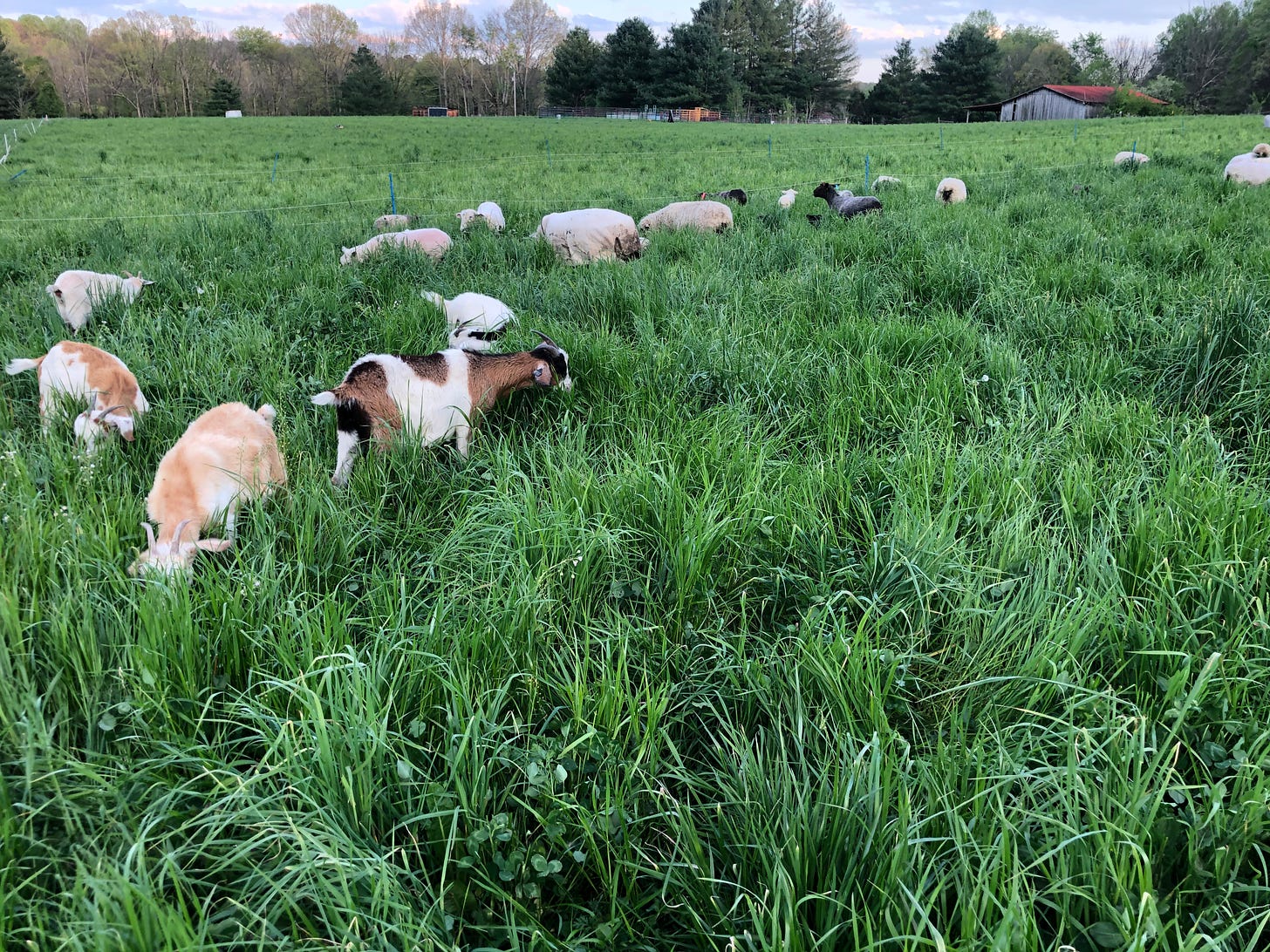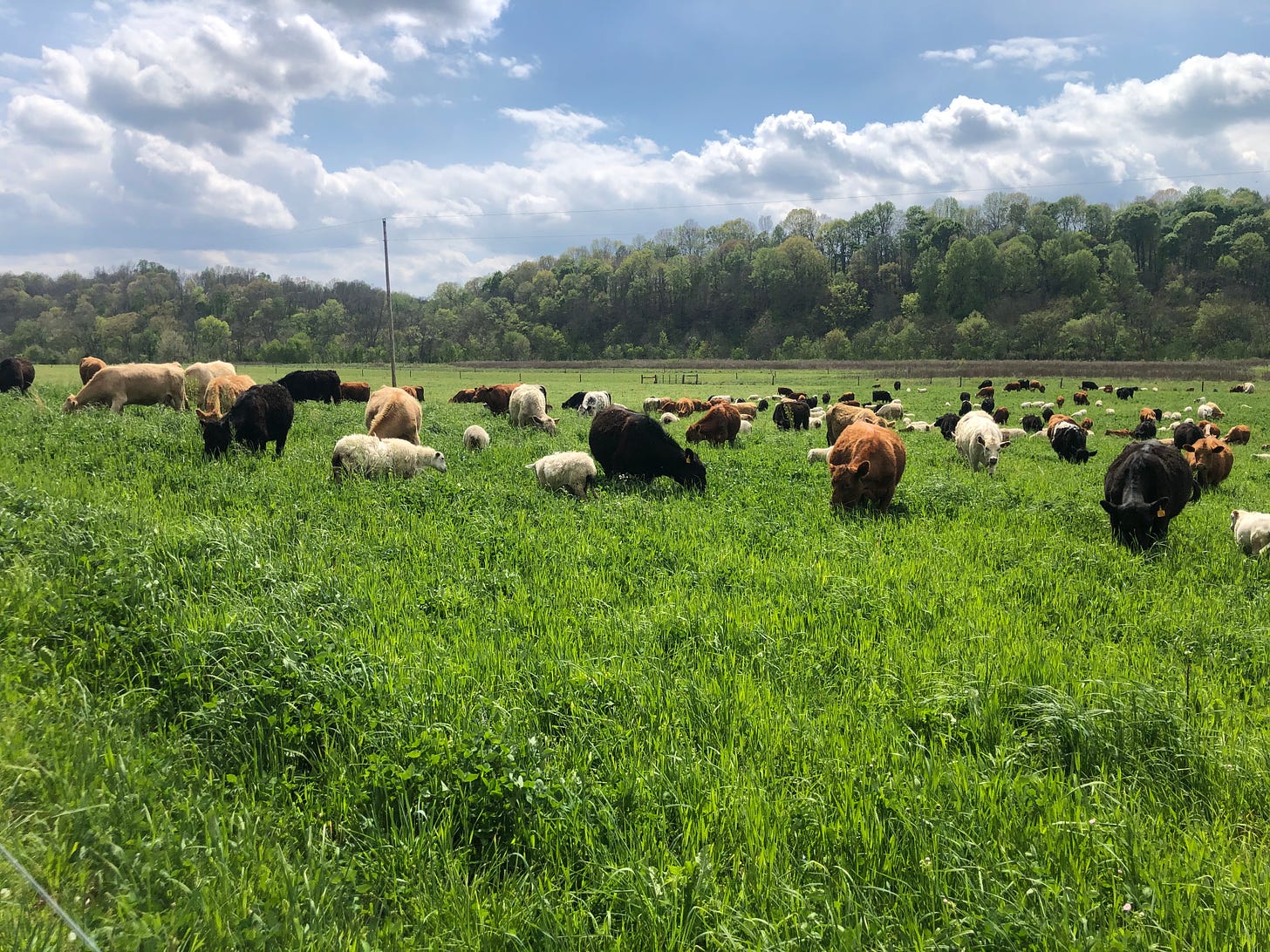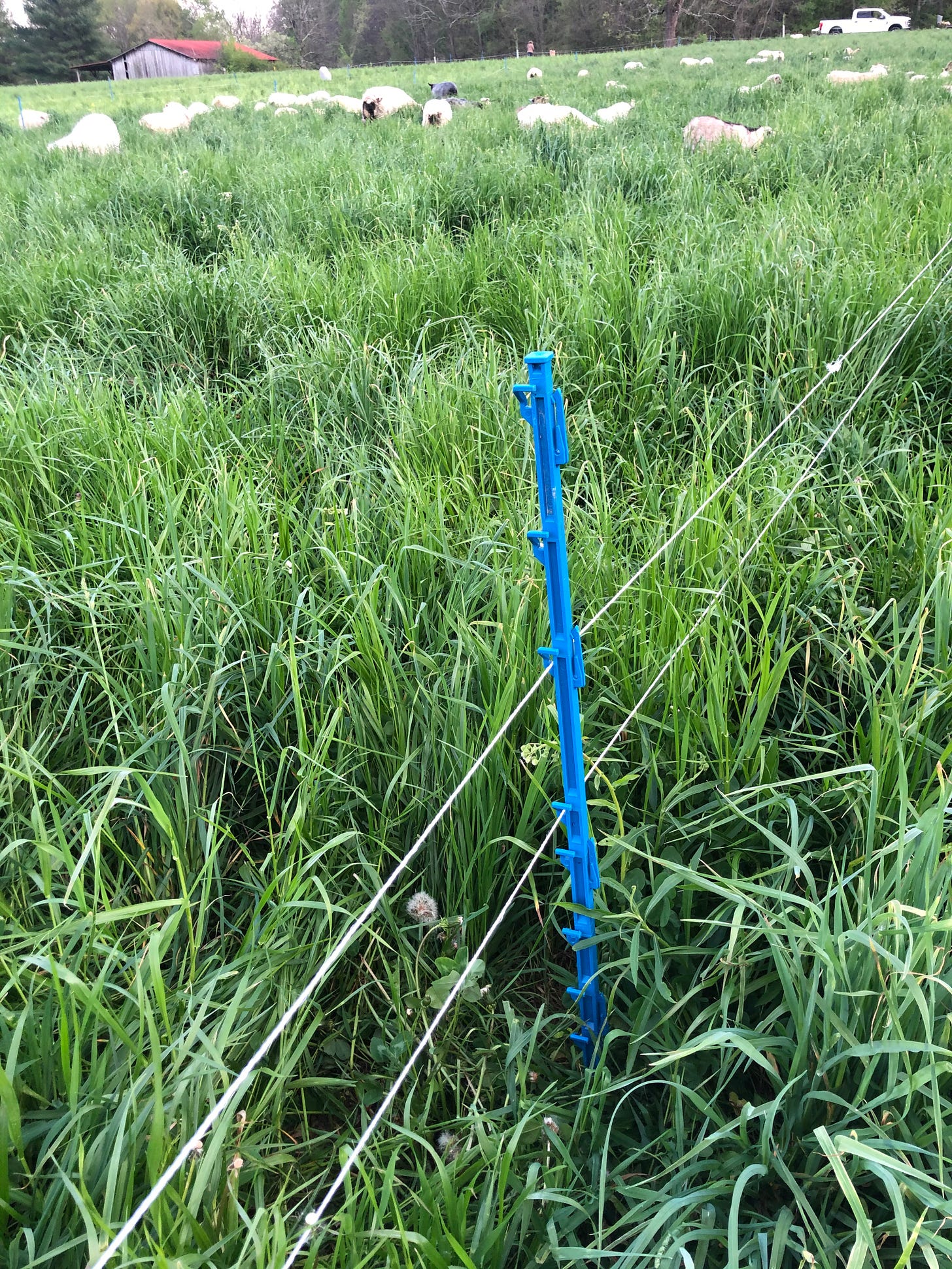
June 2021 Timely Tips – Adaptive Grazing Management
Any quick search on Google or YouTube with the mention of grazing is enough to send you down an rabbit hole that can easily cause confusion and frustration as you try to plan your grazing management for summer pastures. Here are some of the different types of grazing systems you’ll find in the rotational grazing articles and a brief description of each.
I find that most of my farm responds best to the Top Third Grazing method but I use many of these options when they’re required for soil, pasture, and livestock health.
· Prescribed grazing: a designed method to accomplish a goal. It may include multiple strategies
· Rotational grazing; typically 3 to 14 days of grazing followed by 28 or more days of recovery
· Flash grazing; short periods of grazing from hours to 2 days less than 4 times per year
· Creep grazing; allowing young stock to graze ahead of their mothers
· Forward grazing; high nutritional need stock graze first followed by animals with lower nutritional needs
· Strip grazing; providing a new strip of grazing hourly or every few days
· Time limit grazing; grazing an area for a short period
· High density/short-duration grazing; 4,000 pounds per acre to 70,000 pounds per acre. Stocking rates over 70,000 pounds per acre will usually need the stock to be rotated two or more times per day.
· Ultra-high density grazing (mob grazing); 70,000 pounds plus per acre.
· Total grazing (boom or bust) (landscaping); making stock graze everything followed by a long recovery. In high rainfall areas, recovery periods of 90 days or more will be needed.
· Seasonal grazing; grazing when grass is in abundance. I employed this technique on a field allowing a taller residual height over winter and the grass rewarded me with magical production.
· Put and Take grazing; adjusting the number of livestock as pasture production changes (e.g. early-season double stocking)
· Continuous grazing; any benefits of managed grazing decrease substantially when fields are grazed longer than 14 days
· Spot grazing (selective grazing); a sign that livestock preferentially grazed certain plants/areas. This is typically due to stocking density not being high enough.
· Over-grazing; grazing below where most carbohydrates are stored. This results in high utilization but production can be reduced by as much as 2/3rds.
No matter which management style you choose for your particular situation here are some things to remember for success with your grazing management.
-
Rotate livestock before your most limiting resource is stressed and negatively impacted.
-
Wait to rotate until the next paddock is at the proper height to graze based on the present plant community
+ 4” + cool-season grasses
+ 3” bermudagrass, crabgrass, white clover
+ 6” johnsongrass
+ 8” native grass -
Don’t limit yourself or your operation by locking into one form of management
-
No matter which technique you choose, Always rotate when the paddock is soiled
-
Does a field need grazing-disturbance or recovery-rest
-
Graze to keep pastures vegetative and palatable
-
Rotate fast in spring to control seed production
-
Top third grazing allows you to slow down rotation when growth slows
-
Target the pre-boot stage of the plant, when the seed head is moving up the stem
-
Keep light to desired plant community (key plants), shade out undesirable
-
Double stock pastures in spring when grass is plentiful
-
Stockpile reserve paddock 90 days for drought or winter
-
Target your soil sample results for pH 6.8 for soil function, medium range for phosphorus and potassium. A pH of 6.2 is fine for forage production
-
Seed or manage legumes for nitrogen (high protein= Nitrogen)
-
Tools to impact undesirable plants: Strategic grazing, placement of hay, mineral, mobile shade, and water source
-
Shade becomes important when temperature and humidity are above 80
-
Stockpile grass on sacrifice paddock and traps near a corral
-
Combine herds when practical
-
The number of paddocks needed is 16 permanent per herd divided into 45 or more temporary paddocks but any amount is better than one.
-
Strive to not allow back grazing longer than 4 days
-
Back fence to prevent livestock from taking a second bite of desirable plants
What type of grazing management is best for your unique situation?
I’m sure I’ve missed listing some forms of grazing but the main idea to remember is that they all have their place and application. This is where the “adaptive” part comes in. Anything can be accomplished with grazing management. You need a clear goal when choosing your grazing strategy. Different fields can benefit from different grazing techniques. Identify and learn about your plant communities and start rotating!
Wishing you the best, if you have questions, concerns, or rebuttals about anything I’ve presented, feel free to respond to me at gregbrann5@gmail.com. You can find past Timely Tips plus many other resource materials at my website, www.gregbrann.com.
There are many ways to accomplish regenerative grazing.
LOCAL EVENTS
June 25, 26, 2021 South Poll field day Gary and Diane Graves, Trenton, TN southpoll.com
October 14, 2021 Big Spring Farm Pasture Walk
November 5, 2021, Tennessee Forage and Grassland Council Conference, http://utbfc.utk.edu/
The next timely tips: Transitioning to warm season grass.



